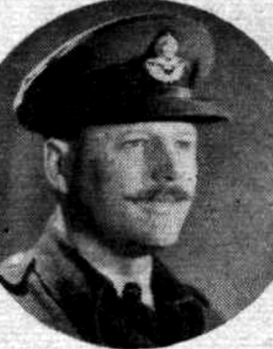
The most Precise Bomber Guidance System during the War was called Oboe & was used mostly by De Havilland Mosquitos of RAF Bomber Command.
- Aircraft Flies at a constant Range from the Cat Station
- Bomb Release Controlled by Mouse Station
- Aircraft carrys a Responder which Amplifies & Radiates Pulse received from Ground Station
- Pilot receives Dots & Dashes from Cat Station if Range is too small or too great
Oboe was a British Aerial Blind Bombing Targeting System in WW2, Based on Radio Transponder Technology. Using Triangulation to determine relative Location, the System consisted of a pair of Radio Transmitters on the Ground, which sent Signals which were Received & Retransmitted by a Transponder in the Aircraft (typically a de Havilland Mosquito or Avro Lancaster). By comparing the time each Signal took to reach the Aircraft, its Location could be calculated to a fair Degree. In this way, an Aircraft could be directed Blindly over a Specific Target, all of which were pre-calculated & kept on File. Prior to a Mission, a Circle was drawn around the Primary Oboe Transmitter so that it passed over the Selected Target, with the Primary Transmitter in the exact Centre & the Radius of the Circle noted. The Transponder equipped Bomber (or Bombers, one at a time) would then attempt to Fly along the Circumference of this Circle towards the Target. By keeping careful Track of the Range between the Transponder & Transmitter, the Oboe Operator in England would use the equipment to see if the Bomber strayed from the Path of the Circle & give the Pilot Instructions on how to regain it. While the Primary Transmitter could tell that the Aircraft was in the Circle, it was impossible to tell at what Point it was. For this, the Range from the Secondary Transmitter was also measured & a Circle drawn around it; the Bomber would be at the Point where the 2-Circles Intersected. By repeatedly doing this, the progress of the Bomber could be Tracked & when it reached the Point where the Primary Line passed over the Target, a Coded Signal was sent alerting the Crew to Drop their Bombs (they would typically also be alerted to Way-points & when the Target was near). The Path was only 35-yards (32M) wide, allowing for much greater accuracy than other Systems like Gee. The Curved Path of the Aircraft was quite evident to German Radar Operators, who came to call the system “Boomerang” after the Arc Segment left on their Displays as the Aircraft appeared & disappeared out of Range. Oboe’s Limitation of 1-Aircraft at a time led to several new Systems. Among these were the Gee-H System, which used the existing Gee Equipment with Oboe-like Transmitters. Gee-H could Guide about 80-Aircraft at once.
I confirm that Oboe (Radio Bombing System) was considered a dirty word! I think we did 60-Attacks & the greater bulk was at Night & if you were invited during the day to Fly a ‘Heavy Bomber’ Straight & Level for however long it is too long. We substituted for Squadron Leader Wakeman on a Wretched Oboe & we immediately were bowled over & a week later he went on another Oboe Attack & again was bowled over. It’s a pity that the RAF, who took what in effect was the Cream of the Crews of Bomber Command in the Pathfinders & said, ‘Oh, no let them do Oboes.’ Let the ruddy Main Force do Oboes, not Pathfinders. We did primitive Formation of 12 or 20 with Oboe but please never Fly a large Aeroplane Straight & Level for 10-mins in Unfriendly circumstances – it really is nonsense & made them Vulnerable to Attack.
